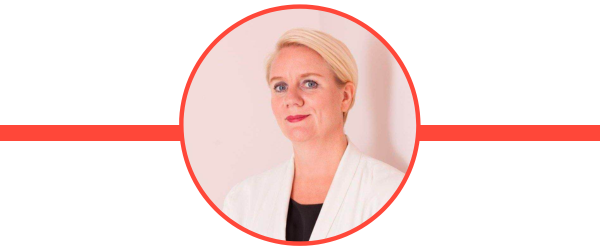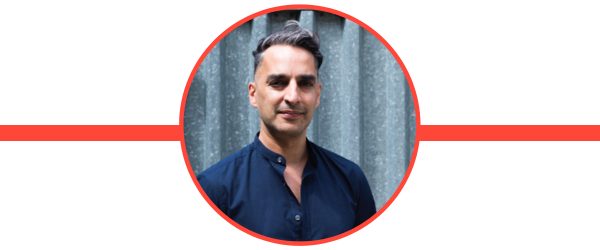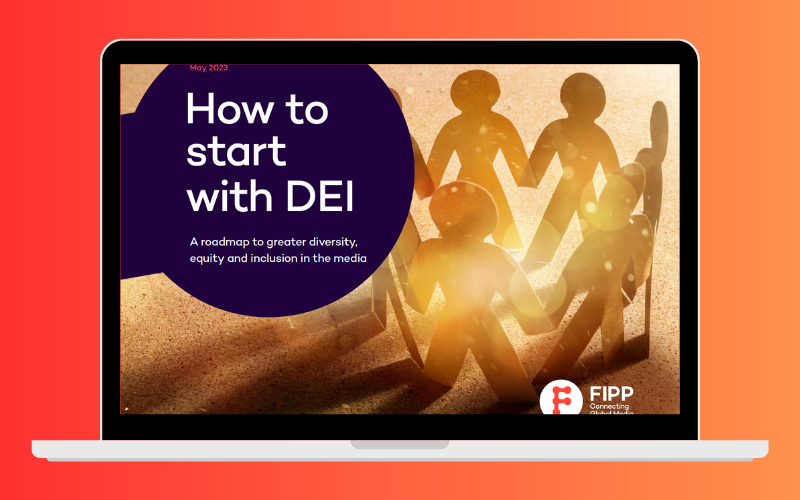Are quotas the magic bullet for the media industry’s DE&I issues?
It appears that most people in the media industry subscribe to the view that having a staff ratio that reflects the demographic makeup of a society is a good thing, and are working towards that goal.
This evolution hasn’t just been triggered by notions of fairness. There are sound business reasons too. Attracting and maintaining a diverse workforce has many benefits including; increased creativity, improved decision-making, and in an age when the battle to attract talent is fierce, employee retention.
It’s an issue that FIPP has explored in depth in its recent ‘How to start with DE&I’ report (exclusive to FIPP members).
The problem for many companies though is how to reach a position whereby both their staffing and their leadership team reflect the society in which they operate.
This is especially acute in management across all industries in Europe and North America where white, middle-class males still predominate.
Media companies are making significant strides. Condé Nast has been one of the pioneers of diversity, inclusion and equity in the publishing world. The percentage of females in its workforce is high at 65%, while the number of non-white staff is rising. In 2020 68% of its US staff were white, this number had dropped to 62% in two years.
Hearst Media claims that 45% of its leadership team is female, and that while 77% of its leadership team is white, that number has been falling in recent years.
The role of quotas
Yet there are some media influencers that claim companies are not moving fast enough. What’s required are quotas, so that everyone in the media business from employees to shareholders can measure a company’s journey towards their DE&I goals.
Metrics are widely used to measure other business aspirations, such as carbon-reduction. Should companies have targets for gender, ethnicity, class, sexuality, disability, neuro-diversity and other criteria?
One person who is enthusiastic about quotas is Jacqui Barrett, Co-Founder and MD of Wider Thinking, a company that helps organisations scale awareness and measurement of Equity, Diversity and Inclusion
She points out that quotas are now widely accepted, and that they help to generate data by which companies can be held accountable.

“The FTSE 100 (in the UK) have done it to a certain extent. The 2021 Parker Review meant all boards had to have at least one person of ethnicity at the C-suite level. It can’t be done organically, there has to be a strategy to increase diversity. We won’t get there without data. Data gives statistical evidence to drive policy change, demonstrate change and measure the impact of any ED&I projects so any investment in ED&I is effective. Quotas, commitments, data – it all maps where you are today and evaluates your efforts tomorrow.”
It’s not just the business world. Across the Western world quotas have been successfully deployed by political parties as they seek to ensure that more women and people from minority groups attain positions of power. In the mid-90s the UK Labour Party created quotas for the number of women candidates and imposed female-only shortlists on some constituencies in 1997. This led to a massive growth in the number of female MPs which is now at 46%.
So if quotas are a concept that is gaining traction across society, the next question is a logistical one – what kind of quotas? Are they just overarching numbers for all staff, or should there be different quotes for different elements within a business – i.e. quotas for leadership teams and board members?
Julia Streets, entrepreneur, CEO, podcast host (DiverCity), investor, mentor and advisor, believes that one of the mistakes that companies sometimes make is to focus on hitting diversity targets by recruiting younger members of the team. For DE&I to be truly successfully integrated it needs to permeate all sections of a business.

“One of the biggest obstacles is what’s commonly referred to as the “permafrost layer” or the “sticky middle”. This is the layer of management that sits one to three layers below the Board level. There may be ambition at the top, but these other layers of management often find it hard – or are seemingly reluctant – to change.
Diversity and inclusion is not a side project. It’s a mindful acknowledgment every single day, in every meeting, even every frame. Who’s in the mix… who isn’t..and why?
Change takes commitment and change takes time. It’s not a quick fix, it’s a powerful, relentless pathway of change. So in a world where we judge success quickly by view figures and engagement data, take a longer view and keep at it.”
Ultimately then creating and delivering quotas demands not just that companies look at the way they recruit staff, but also how staff are promoted within a business.
Instituting quotas at recruitment level
How though do you introduce quotas when recruiting new employees? Depending on the country there are regulatory procedures to be followed. In the UK positive action is legal, positive discrimination is not. So in theory, if two equally qualified candidates are in a tie-breaker situation, it’s legal to hire the candidates from an under-represented group under the Equality Act 2010.
In Norway companies are required to have at least 40% female representation on their boards – the figure was as low as just 3% a few decades ago. Germany, India and Spain all have quotas for the number of female directors, though there is no legislation of this type in the US.
Legalities aside, how should media companies choose the number of people from different backgrounds to have in those quotas? Should they reflect the number of people from different ethnic backgrounds in a society for example? And how do you define society? The country as a whole, the city in which the business operates, or possibly for smaller companies the demographics of the audience they are trying to address?
Also when it comes to ethnicity it is not always straightforward to categorise people. What about people who are from mixed races? What about staff who may have come from what would be categorised as privileged backgrounds yet have minority sexualties, disabilities or are neuro diverse? And how do you address ethnic groups that are over-represented in the media? Across the globe these aren’t always white people. Should companies actively seek to reduce the number of staff from those groups?
These are ongoing discussions that are likely to only be resolved over time as companies become more diverse.
Creating staffing strategies built around DE&I is only part of the story. Ultimately it counts for little if the people who lead media organisations don’t buy into the changes.
Not everyone believes that quotas are the answer and that in some ways they may be seen as a quick fix by media companies who do not want to make more fundamental changes.
Among those who believe that focussing on headcounts can disguise structural issues is Shirish Kulkarni, award-winning journalist, researcher and community organiser.

At FIPP World Media Congress in Cascais, Portugal, on 6-8 June, Shirish Kulkarni will be explaining how diversity and inclusion can ignite innovation, taking companies into places that they might not have ventured before.
“Change isn’t defined by people’s identities it’s defined by their values, beliefs and actions. As so often, talking about quotas or headcount is entirely missing the point.
“The change I want to see is a much more fundamental realignment of newsroom cultures. These issues won’t be addressed by just employing a few more black or brown or disabled people. It’s the people who already hold the power that need to do the work, on themselves and their organisations.”
Yet others argue we live in a society where data is king and queen and everything is measured.
If you can’t measure it, you can’t manage it so yes quotas absolutely do matter,” argues Julia Streets. “Leaders should be measured and compensated on this basis and this key is to bake this into your appraisal as a key performance indicator (KPI). We have a long way to go and we do need those diversity managers to lead and support organisational change.”
What’s your take on quotas? There is more on quotas as well as lots of practical advice in our ‘How to start with DE&I’ report.











